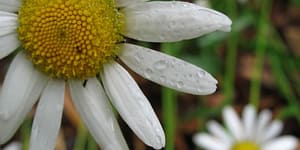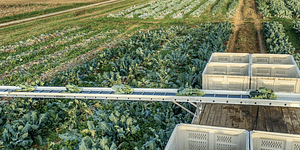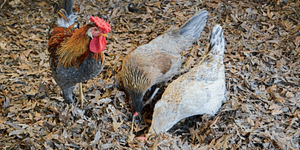Draft Power: The Life-Affirming Alternative to “Big Ag”

Farmers young and old are seeking new ways to shrink their carbon footprint and promote more ecologically friendly ways of getting chores done. So, what’s a modern farmer to do? For some, the centuries old approach of using draft animals—especially horses—is offering a very 21st century solution. Here’s an overview of draft power and its benefits!
The following is an excerpt from Horse-Powered Farming for the 21st Century by Stephen Leslie. It has been adapted for the web.
The world we have known is vanishing. A new world is hurtling toward us. The consumer culture, with all its fake promises of unending technological fixes to every human problem and need, is crumbling before our eyes. More and more we are asked to face the reality that the biosphere itself is a closed-loop system that requires us to wean ourselves away from energy and power sources that are non-regenerative. Meanwhile, the powers-that-be continue to wage a campaign, plying us with electronic gadgets and pharmaceuticals in an attempt to keep us mesmerized as the multinational corporations fill their coffers extracting every last drop of fossil fuel from the earth’s most fragile and endangered ecosystems.

In all the major spiritual traditions of our world, discernment has always been recognized as a crucial quality for the seeker of truth. On an elemental level, discernment is what we use to tell the true from the false. Through the practice of discernment, wisdom grows. The farmer, too, must practice discernment on a daily basis; he or she must decide when to sow and when to reap, which one to breed and which to cull. The farmer also faces such choices as: Which tools to employ? On what scale to farm? Just because farming can be done with genetically modified organisms, satellites, robots, and harvesting machines that cost half a million dollars doesn’t mean it should be done that way.
Today there is a grassroots movement of people in our society who are heeding the call to make their living from the land. Increasing numbers of them are also growing intrigued by the concept that many, if not all, tasks requiring traction on the farm can be economically and efficiently accomplished with live animal power. The workhorse is being recognized as an ally that can help us find our way back to a path that leads to life.
When horses, mules, donkeys, or oxen are used in agriculture they become instrumental in enriching the soil because they are a primary source of fertilizer on the farm. In the fields, they tread lightly and do not cause the soil compaction that can result from the wheels and weight of a tractor. The horses are essentially solar-powered: They run on grass, hay, and oats, which they can help us grow and harvest on the farm. By using draft animals to power our farms, we help to minimize our carbon footprint, and they deliver a living, clean, sustainable, and regenerative energy.
Beyond the practical considerations of draft power, entering into partnership with workhorses can also lead us to deeper insight into what it means to be a human being in relationship with the natural world. To accomplish our farmwork successfully with horses, we need to become “a little bit” horse, and the horse needs to become “a little bit” human. Because both human and horse are willing to try, somewhere in the vast gulf that differentiates our species is a space where horse and human can meet and begin to forge a relationship. In many cases, a horse can even become a part of the farm family. We tend to think of farming as the modifications we impose on a landscape to reap our harvests. But there is a relational element that in a very real sense also shapes the farmer. It is like a painter painting a landscape: Somewhere between the interaction and reflection, we are formed and informed.

Recommended Reads
Recent Articles
Oxeye daisies are one of the most important plants for pollinators including beetles, ants, and moths that use oxeye daisies as a source of pollen and nectar. Instead of thinking about removing a plant like oxeye daisy, consider how you can improve the fertility and diversity of habitat resources in your home landscape, garden, or…
Read MoreSo you want to start reaping your harvest, but you’re not sure where to start? Learn how to break down the options of harvesting tools!
Read MoreWhat’s so great about oyster mushrooms? First, you can add them to the list of foods that can be grown indoors! They are tasty, easy to grow, multiply fast, and they love a variety of substrates, making oyster mushrooms the premium choice. The following is an excerpt from Fresh Food from Small Spaces by R. J.…
Read MoreEver heard the phrase, “always follow your nose?” As it turns out, this is a good rule of thumb when it comes to chicken manure. Composting chicken manure in deep litter helps build better chicken health, reduce labor, and retain most of the nutrients for your garden. The following is an excerpt from The Small-Scale Poultry…
Read More







